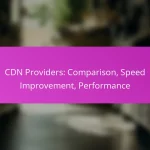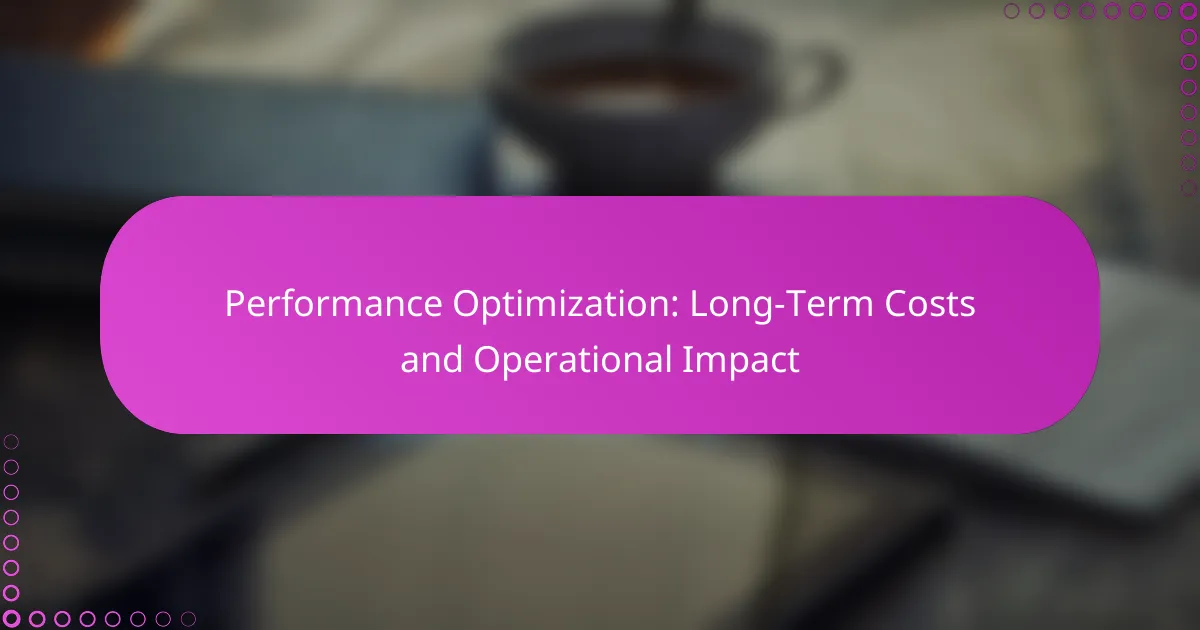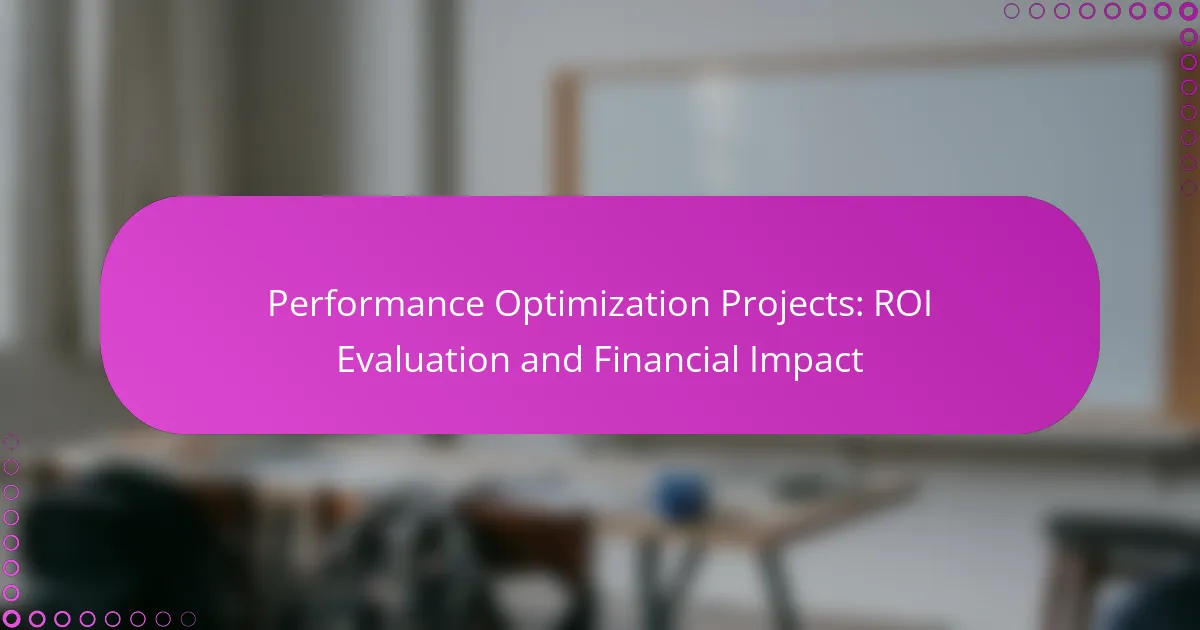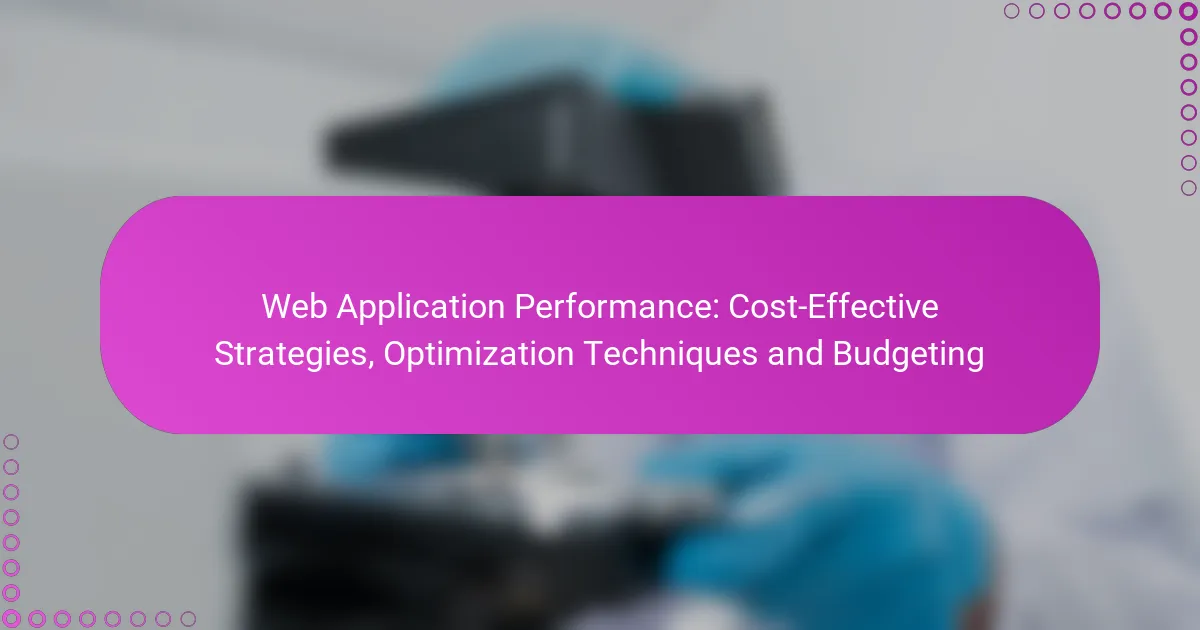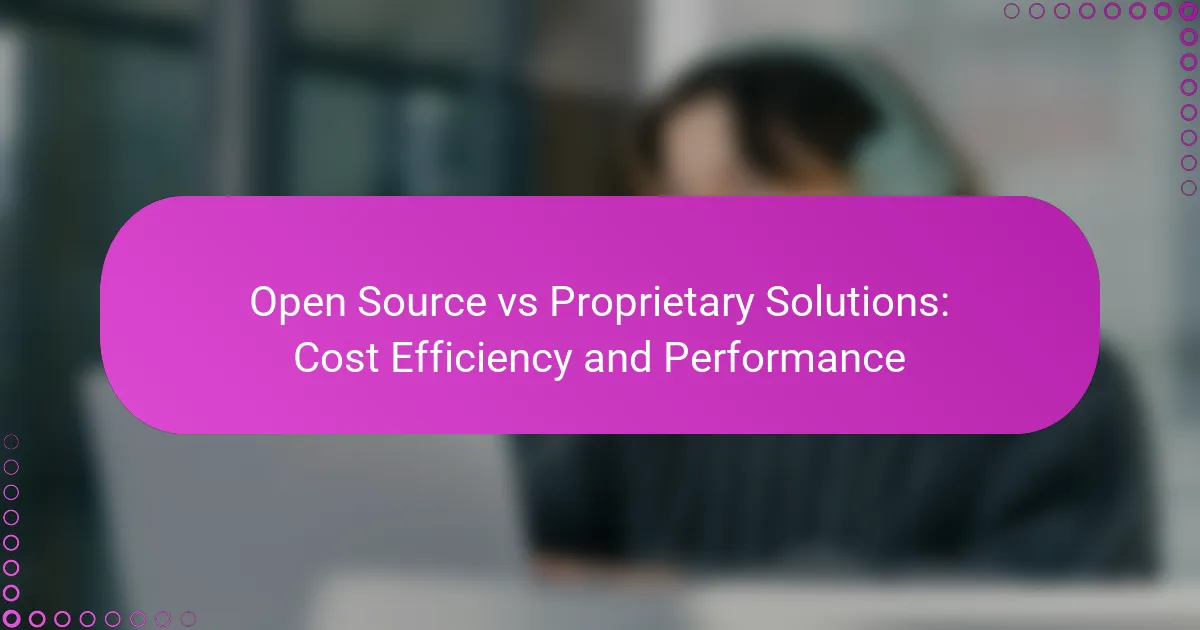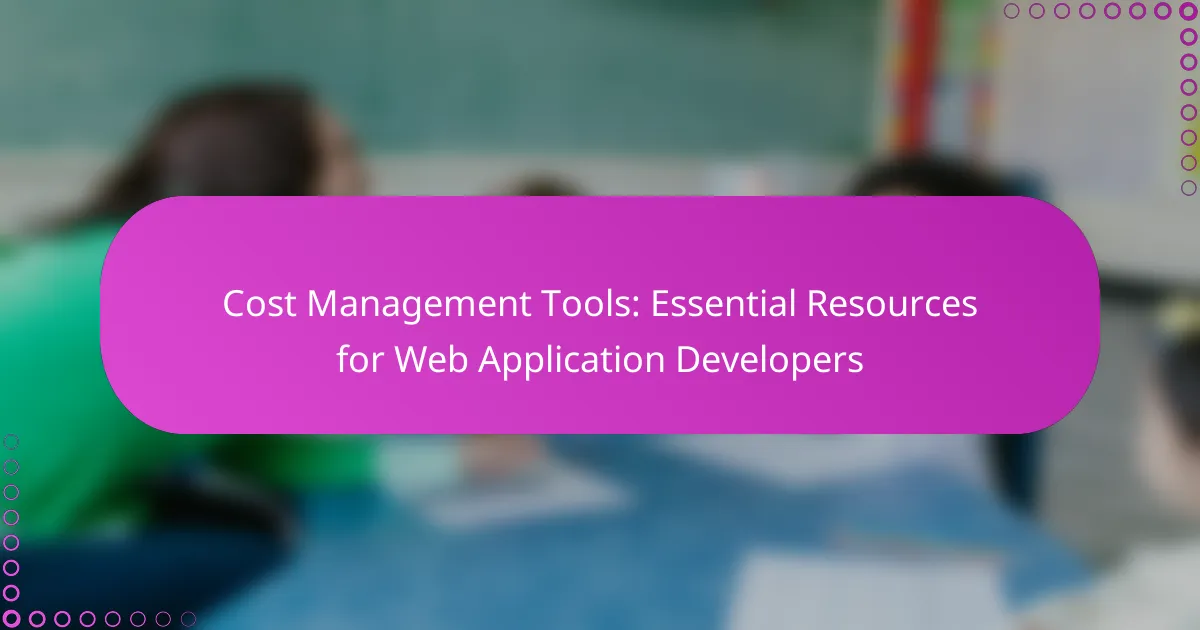Performance optimization is crucial for enhancing speed and efficiency while effectively managing long-term costs. By implementing strategies such as caching, optimizing database queries, and utilizing content delivery networks, businesses can streamline operations, reduce expenses, and improve overall productivity. These enhancements not only boost system responsiveness but also foster better user experiences and increased customer loyalty.

What are the best practices for performance optimization?
Effective performance optimization involves a combination of strategies aimed at enhancing speed and efficiency while minimizing long-term costs. Key practices include implementing caching, optimizing database queries, utilizing content delivery networks, minifying code, and conducting regular audits to ensure ongoing performance improvements.
Implementing caching strategies
Caching strategies store frequently accessed data in a temporary storage area to reduce load times and server requests. Consider using server-side caching, browser caching, and content caching to enhance performance. For example, caching static assets like images and stylesheets can significantly decrease page load times, often improving user experience by seconds.
Be cautious about cache expiration; set appropriate time-to-live (TTL) values to ensure users receive updated content without excessive delays. Regularly review and clear caches to prevent stale data from affecting performance.
Optimizing database queries
Optimizing database queries involves refining how data is retrieved to improve response times and reduce server load. Use indexing to speed up searches and avoid complex joins when possible. Analyzing query performance can help identify bottlenecks and areas for improvement.
Consider using tools like query analyzers to monitor and optimize slow queries. Aim for queries that execute in low tens of milliseconds for optimal performance, especially under high traffic conditions.
Utilizing content delivery networks
Content delivery networks (CDNs) distribute content across multiple servers worldwide, reducing latency and improving load times for users regardless of their location. By caching content closer to users, CDNs can significantly enhance performance, especially for global audiences.
Choose a CDN that offers a wide network of servers and supports dynamic content delivery. This can lead to performance improvements of up to 50% in some cases, particularly for media-rich websites.
Minifying CSS and JavaScript
Minifying CSS and JavaScript involves removing unnecessary characters, such as whitespace and comments, to reduce file sizes and improve load times. This practice can lead to faster parsing and execution of scripts, enhancing overall site performance.
Use tools like UglifyJS for JavaScript and CSSNano for CSS to automate the minification process. Aim for a reduction of 20-30% in file sizes to see noticeable improvements in load times.
Conducting regular performance audits
Regular performance audits assess your website’s speed and efficiency, identifying areas for improvement. Utilize tools like Google PageSpeed Insights or GTmetrix to analyze performance metrics and receive actionable recommendations.
Schedule audits quarterly or biannually to stay ahead of potential issues. Focus on key performance indicators (KPIs) such as load time, time to first byte, and overall user experience to guide your optimization efforts.
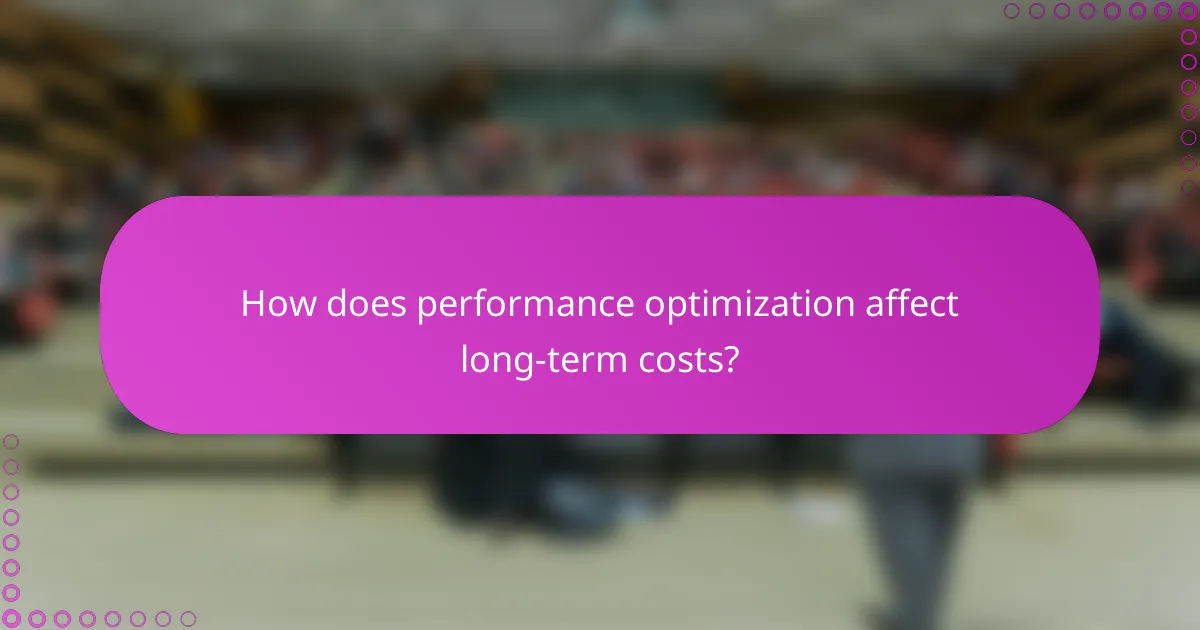
How does performance optimization affect long-term costs?
Performance optimization significantly reduces long-term costs by improving efficiency and resource management. By streamlining processes, businesses can lower operational expenses and enhance overall productivity.
Reduces operational expenses
Optimizing performance can lead to substantial reductions in operational expenses. For instance, faster processes mean less time spent on tasks, which translates to lower labor costs. Companies can save tens of percent on operational budgets by minimizing waste and improving workflow efficiency.
Implementing performance optimization strategies, such as automating repetitive tasks or improving software efficiency, can yield immediate financial benefits. Regularly reviewing and updating systems ensures that they remain cost-effective and aligned with business goals.
Decreases server resource usage
Performance optimization directly decreases server resource usage, which can lead to lower hosting costs. By optimizing applications and databases, companies can reduce their need for high-capacity servers, allowing them to choose more economical hosting plans.
For example, a well-optimized website may require only a fraction of the server resources compared to a poorly optimized one, resulting in savings on monthly hosting fees. Monitoring server performance regularly can help identify areas for further optimization, ensuring ongoing cost efficiency.
Minimizes downtime costs
Effective performance optimization minimizes downtime costs, which can be significant for businesses. Unplanned outages can lead to lost revenue, decreased customer trust, and increased recovery expenses. By optimizing systems, companies can enhance reliability and reduce the frequency of downtime events.
Investing in performance monitoring tools can help identify potential issues before they escalate into downtime. Establishing a proactive maintenance schedule can further mitigate risks, ensuring that systems remain operational and costs are kept in check.
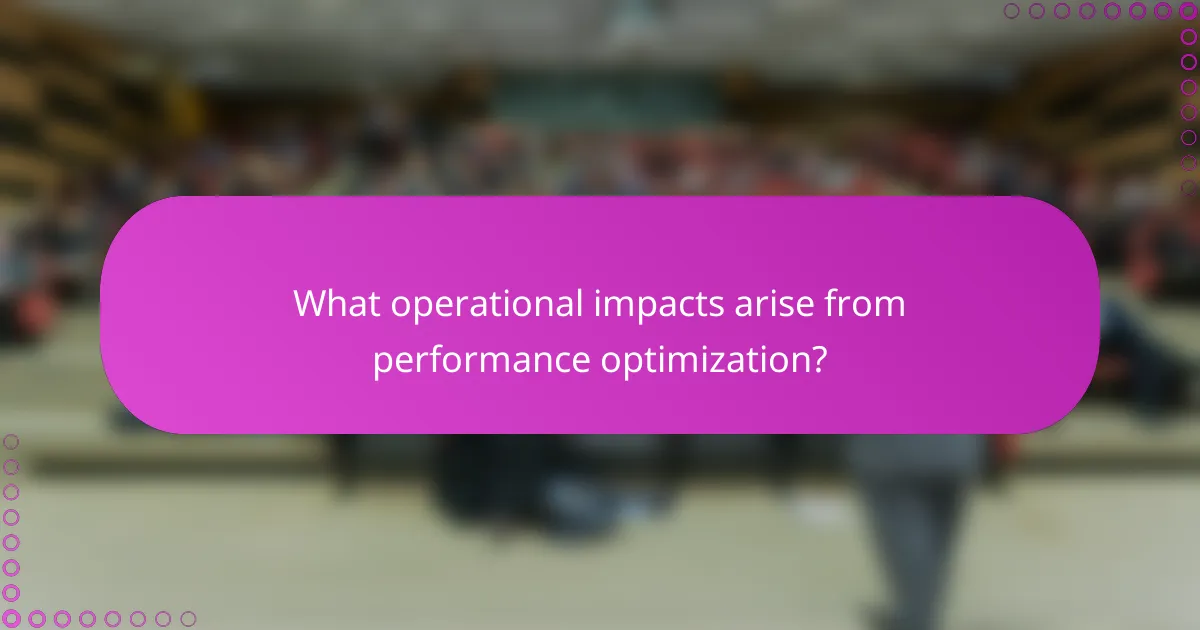
What operational impacts arise from performance optimization?
Performance optimization can significantly enhance operational efficiency by improving system responsiveness and reliability. These improvements lead to better user experiences, increased customer loyalty, and a more stable operational environment.
Improved user experience
Optimizing performance directly enhances user experience by reducing load times and increasing responsiveness. Users typically expect web applications to load within a few seconds; delays can lead to frustration and abandonment. For instance, a website that loads in under three seconds can retain a higher percentage of visitors compared to one that takes longer.
To achieve this, consider techniques such as image compression, code minification, and leveraging browser caching. Regularly testing performance with tools like Google PageSpeed Insights can help identify areas for improvement.
Enhanced system reliability
Performance optimization contributes to enhanced system reliability by minimizing downtime and ensuring consistent availability. Systems that are well-optimized can handle higher loads without crashing, which is crucial during peak usage times. For example, an e-commerce site optimized for performance can manage increased traffic during sales events without service interruptions.
Implementing monitoring tools to track system performance can help identify potential bottlenecks before they lead to failures. Regular updates and maintenance are also essential to keep systems running smoothly.
Increased customer retention
Improved performance can lead to increased customer retention as satisfied users are more likely to return. Research shows that even minor improvements in load times can significantly impact user satisfaction and loyalty. For instance, a faster checkout process can reduce cart abandonment rates, directly affecting sales.
To foster retention, focus on continuous performance improvements and solicit user feedback to identify pain points. Offering incentives for repeat visits can also enhance customer loyalty while ensuring that the performance remains a priority.

What tools are available for performance optimization?
Several tools can help with performance optimization, each offering unique features to analyze and enhance website speed and efficiency. These tools provide insights into various performance metrics, helping identify bottlenecks and areas for improvement.
Google PageSpeed Insights
Google PageSpeed Insights evaluates the performance of a webpage on both mobile and desktop devices. It provides a score from 0 to 100, with higher scores indicating better performance. The tool also offers specific suggestions for improving load times, such as optimizing images and leveraging browser caching.
To use PageSpeed Insights, simply enter the URL of the page you wish to analyze. The tool will generate a report detailing performance metrics and actionable recommendations. Regularly checking your site’s score can help maintain optimal performance over time.
GTmetrix
GTmetrix combines Google Lighthouse and WebPageTest to provide a comprehensive analysis of website performance. It offers detailed reports on load times, page size, and the number of requests, along with a performance score. Users can also set up alerts to monitor performance changes over time.
This tool allows for comparison between different versions of a webpage, making it easier to track the impact of optimization efforts. GTmetrix also provides recommendations and a waterfall chart to visualize loading sequences, helping identify specific areas to target for improvement.
New Relic
New Relic is a performance monitoring tool that focuses on application performance management (APM). It provides real-time insights into server response times, transaction traces, and user interactions. This tool is particularly useful for identifying backend performance issues that may affect user experience.
With New Relic, you can monitor the performance of various components, including databases and third-party services. Setting up alerts for performance thresholds can help you proactively address issues before they impact users, ensuring a smoother operational flow.
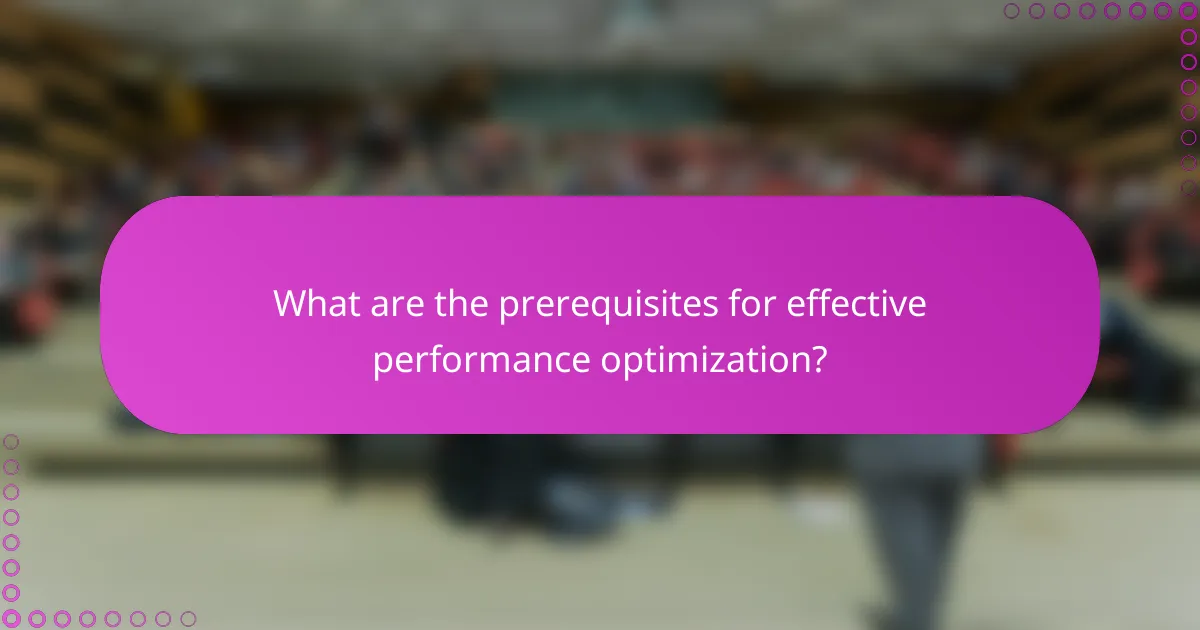
What are the prerequisites for effective performance optimization?
Effective performance optimization requires a clear understanding of existing systems and their performance metrics. Organizations must establish baseline measurements and identify key performance indicators (KPIs) to guide their optimization efforts.
Understanding current performance metrics
To optimize performance, it is essential to first grasp the current performance metrics. This involves collecting data on response times, throughput, and resource utilization across various components of the system. Tools like application performance monitoring (APM) software can help in gathering this data effectively.
Establishing benchmarks based on historical data allows organizations to set realistic performance goals. For instance, if a web application typically responds in 200 milliseconds, aiming for a 20% improvement would set a target of 160 milliseconds.
Identifying bottlenecks in the system
Identifying bottlenecks is crucial for effective performance optimization. Bottlenecks can occur in various areas, such as database queries, network latency, or server processing power. Analyzing performance metrics helps pinpoint these slowdowns, allowing for targeted improvements.
Common techniques for identifying bottlenecks include load testing and profiling. For example, if a database query takes significantly longer than expected, it may need optimization through indexing or query restructuring. Regularly reviewing system performance can prevent bottlenecks from becoming critical issues.
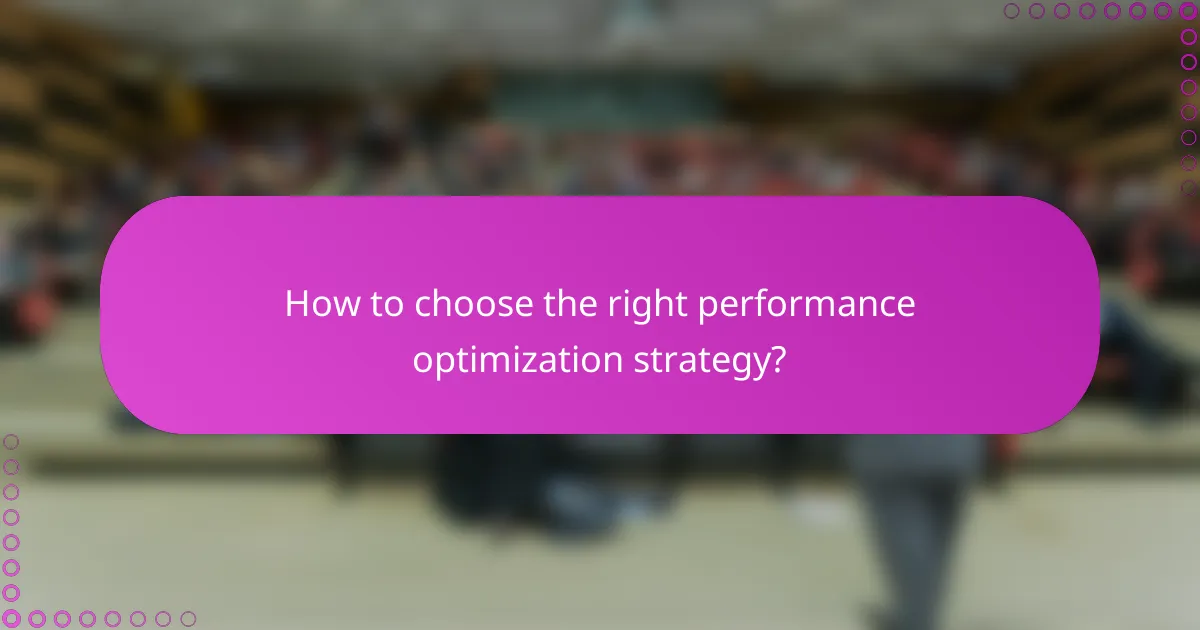
How to choose the right performance optimization strategy?
Selecting the right performance optimization strategy involves aligning your approach with your business objectives and the technology you use. Consider both short-term gains and long-term operational impacts to ensure sustainable improvements.
Assessing business goals
Begin by clearly defining your business goals, as they will guide your optimization efforts. Whether you aim to enhance user experience, reduce operational costs, or increase throughput, your strategy should directly support these objectives.
For instance, if your goal is to improve customer satisfaction, focus on optimizations that enhance load times and responsiveness. Conversely, if cost reduction is a priority, consider strategies that minimize resource consumption while maintaining performance.
Evaluating technology stack
Your technology stack plays a crucial role in determining the most effective optimization strategies. Assess the current tools, frameworks, and platforms you use to identify any potential bottlenecks or inefficiencies.
For example, if you are using outdated software or hardware, upgrading may yield significant performance improvements. Additionally, consider the compatibility of new optimization tools with your existing stack to avoid integration issues.

